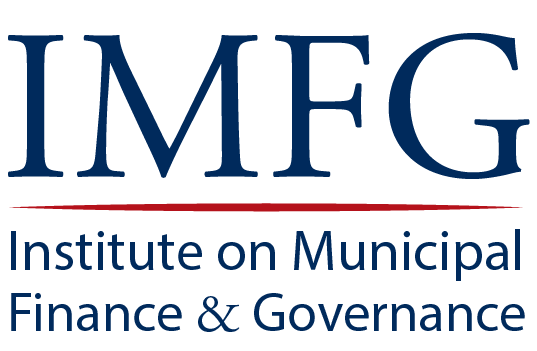Making a Difference in the Lives of Vulnerable Youth
by Kofi Hope
Youth equity is a pressing issue in the Greater Toronto and Hamilton Area (GTHA). Youth unemployment remains entrenched; Toronto retains the dubious distinction of being Canada’s child poverty capital; and Black, Indigenous, and racialized young people face significant achievement gaps.
Having spent my career in the youth sector, I know there is no shortage of volunteers, non-profit organizations, and government services dedicated to supporting youth. What we lack are integrated, community-based strategies that coordinate the available services and supports to fill service gaps, eliminate duplication, and increase impact. One catchphrase to describe such an approach is “collective impact.” Collective impact is now in danger of becoming one of the most overused terms in the social change world.
Yet in the GTHA and I daresay the Canadian context, examples of true collective impact models are rare. Everyone claims to be doing it, but no one seems to be doing it well. What is needed is this: community-based strategies, spearheaded by municipalities, to coordinate services for youth. Within these strategies we need a focus on vulnerable youth, with specific attention to transition points in these young people’s lives and dedicated long-term supporters to help them navigate systems and achieve success.
Collective impact originated in the youth sector, the best-known example being the Harlem Children’s Zone (HCZ) in New York City. Geoffrey Canada and his team created a “cradle to college” model for coordinating children and youth programs across Harlem to all work towards the goal of increasing post-secondary achievement in that community. The Promise Neighbourhoods initiative, championed under the Obama administration, attempted to replicate this model across the United States. It followed the same idea: get communities to identify common goals for social change then ensure that different stakeholders work towards those goals in one integrated system. Yet collective impact models like these are extremely difficult to create.
The social service sector, despite all the talk of “partnership and collaboration,” is highly competitive. In a funding environment in which most agencies are under-resourced and increasingly asked to do more with less, all the incentives are to look out for your own agency and never give an inch in the service delivery space. Meanwhile, collective impact requires a huge degree of collaboration from agencies. Quite often, it’s the very same funders who have created such a hyper-competitive environment who are asking for this degree of coordination.
Further, collective impact efforts are typically add-ons to existing competitive funding streams, and there is little intention to make them truly transformative. Rarely do funders provide the additional dollars needed for the upfront, multi-year, organic work required to get a community to come together to define collective goals and coordinate services. In the GTHA, much of the push for collective impact has come from the Province. Although the Province may have the best of intentions, many ministries lack the local knowledge required to really do collective impact well.
This is where municipalities come in. They may not be able to provide all the dollars, but they have the local leadership and understanding required to help create neighbourhood-based or city-region–based collective impact strategies. Cities can help identify the right communities to target for these frameworks. They know the local agencies and can help coordinate government bodies that interact with youth: schools, police services, children’s aid societies, social housing providers, and youth justice institutions.
Such strategies are too costly to have in every municipality. They are most needed in communities with the largest barriers to youth success. Investing early in youth who face multiple barriers saves society millions of dollars in incarceration, lost productivity, and emergency room visits.
Within this concern for the most vulnerable, we must focus on transition points. Change is difficult for anyone. For vulnerable youth, transitions are especially hard: leaving the care of Children’s Aid, leaving high school, leaving incarceration, or leaving a life-skills program. At such times I have seen youth fall through the cracks, when they move from a context in which they are getting support and access to resources to one without support or resources.
What could help is dedicated, personalized support for vulnerable youth on their journey towards maturity. We talk in the field about the benefits of individualized case management, of providing “wrap-around” social supports customized for youth. These supports do work, but are always time-limited. When a young person leaves one program or agency, the supports rarely follow.
Municipalities could provide dedicated staff, similar to provincially-funded Youth Outreach Workers, who could act as long-term supporters and system navigators for vulnerable youth. For example, when a youth gets kicked out of school, he or she could be assigned such a supporter. This individual could help refer that young person to places to get work, or a General Equivalency Diploma (GED), or other supports.
After the first referral, the supporter and the young person could keep their relationship in place, for years if necessary, helping the youth access the next level of services or supports they need. This is what the best youth workers already do, but rarely is it systematized. By making dedicated youth supporters part of a collective impact system, we would add the “glue” to make sure the young people who most need support stay connected and access the available resources.
Youth issues are complex. They overlap all levels of government and involve individuals who over two decades go through many development stages, each requiring specific services and supports. But complexity does not make the issues insurmountable. By better aligning the system we have and putting a marked focus on the most vulnerable our region, we can unlock the potential of many more young people, to the benefit of us all.

Kofi Hope is a Rhodes Scholar, Doctor of Politics from Oxford University, and winner of the 2017 Jane Jacobs Prize. He was the Founding Executive Director of the CEE Centre for Young Black Professionals and currently works as a Senior Policy Advisor at the Wellesley Institute. He is Bousfield Distinguished Visitor at the University of Toronto’s Department of Urban Planning for 2018.
